|
CHRYSLER’S A-833 4-SPEED TRANSMISSION
|
|
|
|
|
The Chrysler 4-speed was introduced during the fall of 1963 for the introduction of the 1964 models, and has since been produced in several different versions with various updates and modifications. The A-833 operates basically the same regardless of model or application. It was available in two different lengths; A/F body (short) and B/E body (long). Both coarse and fine pitch gears were used along with four different production ratios. From an interchangeability standpoint there are basically three versions: small spline, large spline and overdrive. The small spline was used in all body styles and with all engines except 440 and 426 Hemi (which used the large splines). The overdrive version was introduced in 1975. All small spline drive pinions (input shaft) have 23 splines, while large spline pinions have 18 splines. Clutches used with each style drive pinion must have the corresponding number of splines. Check the following table to identify the retainer size and corresponding drive pinion bearing in your transmission. |
|
|
|
|
FRONT BEARING RETAINER DIMENSIONS
|
|
 |
|
Another important feature to note is the shifting mechanism and side cover. Two types of shifting mechanisms were used and they can easily be distinguished by the side cover arrangement.
|
|
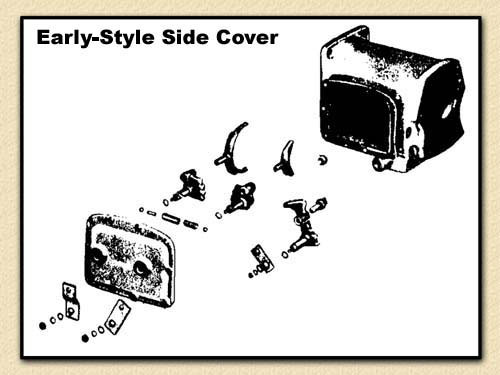 |
|
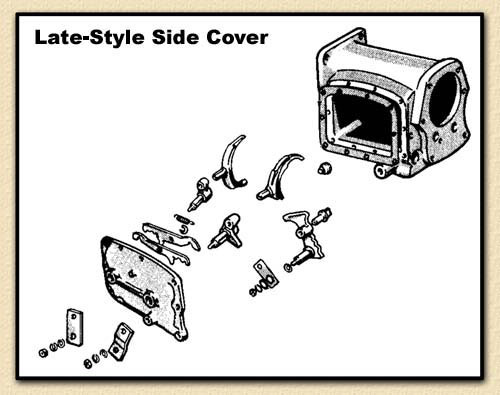
|
|
|
|
|
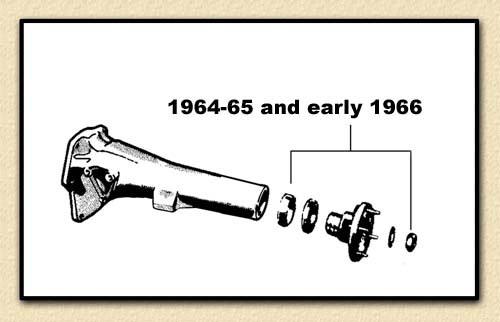
|
|
|
|
|
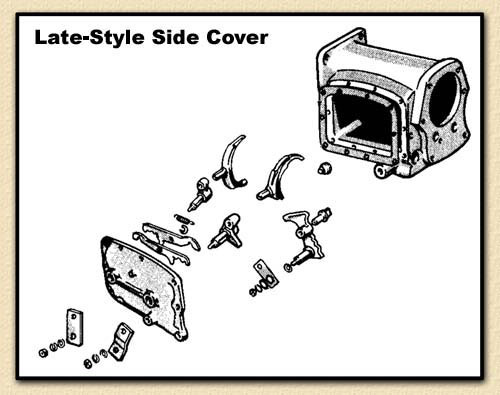
|
|
|
|
Several sets of gear ratios were used through the years. Consult the table below showing gear ratios for both coarse and fine pitch gears.
|
|
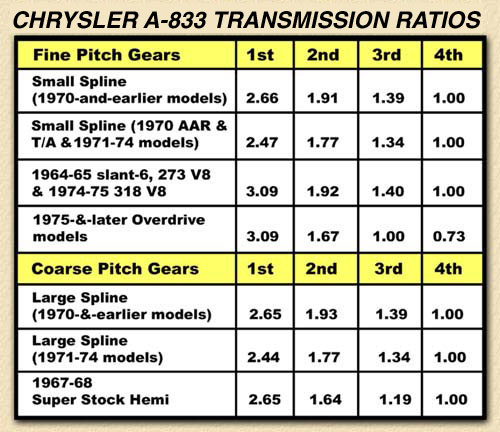 |
|
|
The following table is a listing of the number of gear teeth for the various production 4-speeds. This table is especially helpful when purchasing parts or assembling a transmission from several used units.
|
|
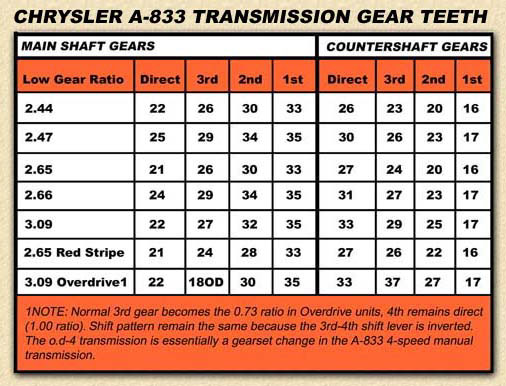 |
|
|






